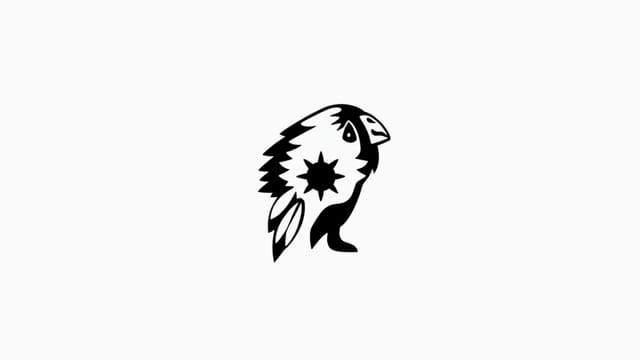Where Are Blackfeet Indians From
The Blackfeet Indians, also known as the Blackfoot people, are one of the most historically significant Native American tribes of the Great Plains. Their deep cultural traditions, strong warrior society, and connection to the vast lands of North America make them a unique and powerful presence in indigenous history. Understanding where the Blackfeet are from involves exploring their geographic origins, migration patterns, and the development of their modern communities in both the United States and Canada.
Origins and Early Territory of the Blackfeet Indians
The Blackfeet Indians are originally from the northwestern regions of the Great Plains. Historically, their territory covered a vast area, primarily centered in present-day Montana in the United States and Alberta in Canada. Their original homeland extended from the North Saskatchewan River in Canada to the upper Missouri River in Montana. This expansive region includes grasslands, river valleys, and parts of the Rocky Mountains.
The name ‘Blackfeet’ was given to them by European explorers and traders, likely derived from the black-dyed moccasins the people wore. However, the people refer to themselves as Niitsitapi, meaning ‘the Real People.’ The Niitsitapi Confederacy is composed of several bands:
- Siksika (‘Blackfoot’)
- Kainai (‘Blood’)
- Pikuni or Piikani (‘Poor Robes’)
In the United States, the term ‘Blackfeet’ commonly refers to the Pikuni, who are one of the main bands that settled south of the U.S.-Canada border.
Traditional Lifestyle and Land Use
The Blackfeet were traditionally nomadic bison hunters who adapted remarkably to the harsh conditions of the Plains. Before the introduction of horses by Europeans in the 18th century, they hunted on foot and lived in portable tipis made from buffalo hides. The acquisition of horses transformed their way of life, enabling them to expand their hunting grounds and increase their mobility.
They followed the seasonal migrations of buffalo herds, which were central to their survival. The buffalo provided food, clothing, tools, and shelter. The vast land they inhabited was not just a home but a spiritual landscape, filled with sacred sites and deep significance.
Migration and European Contact
Before extensive European contact, the Blackfeet occupied large territories in the northern plains. Their location allowed them to interact with many other indigenous groups, including the Crow, Shoshone, Cree, and Sioux. In the 1700s and 1800s, European explorers, fur traders, and settlers brought major changes to the region.
The Blackfeet became involved in the fur trade, primarily with British and Canadian traders. They traded buffalo hides and other goods for firearms, metal tools, and cloth. However, with trade came diseases such as smallpox, which devastated their population. By the late 19th century, colonization, inter-tribal conflicts, and forced treaties led to significant changes in their territory and sovereignty.
Blackfeet in the United States
In the U.S., the Blackfeet were gradually pushed onto reservations through a series of treaties and federal policies. Today, most of the American Blackfeet live on the Blackfeet Indian Reservation in northwestern Montana. Established in 1855 and officially recognized in 1888, the reservation covers over 1.5 million acres and is located east of Glacier National Park.
The reservation is home to the Blackfeet Nation, which consists mainly of the Southern Piegan or Pikuni band. The Blackfeet Nation has its own tribal government and works actively to preserve language, culture, and economic development.
Blackfeet in Canada
North of the border, in Alberta, Canada, the Blackfoot Confederacy continues to thrive through three main First Nations:
- Siksika Nation
- Kainai Nation (Blood Tribe)
These Canadian Blackfoot communities have retained much of their traditional heritage and are recognized as distinct First Nations by the Canadian government. Like their American counterparts, they are involved in cultural preservation, language revitalization, and land management.
Geographic Significance and Sacred Sites
Many of the places historically inhabited by the Blackfeet remain important today. The area around the Rocky Mountains, especially Glacier National Park and the Sweet Grass Hills, holds spiritual meaning. Ancient trails, vision quest sites, and buffalo jumps still dot the landscape.
Blackfeet cosmology and oral traditions tie them closely to their geography. Mountains, rivers, and plains are seen not only as resources but as living elements of their spiritual world. These sacred relationships continue to influence cultural practices, ceremonies, and tribal governance.
Modern Identity and Cultural Revival
Today, Blackfeet people continue to maintain a strong sense of identity connected to their ancestral lands. On both sides of the U.S.-Canada border, efforts are ongoing to revitalize the Blackfoot language, teach traditional skills, and preserve sacred ceremonies.
In Montana, the Blackfeet Nation operates cultural centers, educational institutions like Blackfeet Community College, and heritage programs. In Canada, Blackfoot elders and educators play key roles in passing down oral traditions and stories to the younger generation.
Despite the historical trauma of colonization, land loss, and assimilation, the Blackfeet people remain resilient. Their identity is firmly rooted in the lands they have occupied for centuries and in the cultural practices that have sustained them through generations.
The Blackfeet Indians come from the northern plains of North America, primarily in present-day Montana and Alberta. Their rich history, traditional knowledge, and cultural continuity make them one of the most influential and respected indigenous groups on the continent. While historical forces have altered their territories and way of life, the connection between the Blackfeet people and their land remains strong. Through education, preservation, and community resilience, the Blackfeet continue to honor their past while shaping a strong future.
